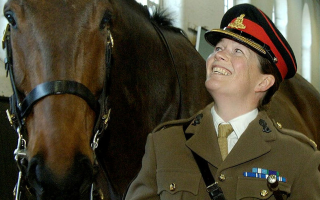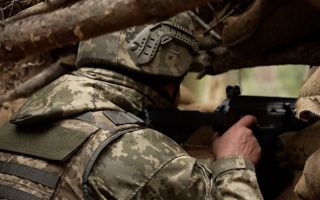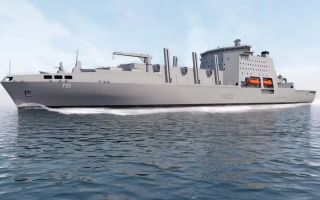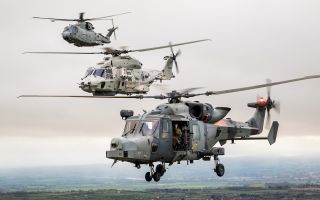Sitrep: Another threshold crossed as Western-supplied vehicles deployed inside Russia
Western politicians may appear to be relaxed about the use of their weapons and armoured vehicles being used by the Ukrainians inside Russia but will be feeling "quite queasy" on the inside, according to Sitrep's resident defence expert.
Professor Michael Clarke was discussing Ukraine's lightning incursion into the Kursk region of Russia on this week’s Sitrep podcast – which analyses the top defence stories of the week and is available wherever you get your podcasts.
"The image of Western armoured vehicles inside Russia is something they would have wanted… to avoid," he said.
"But the fact is, they can't gainsay the fact that the Ukrainians have got a right to defend their borders," he explained.
"And that requires going after the Russians close to the border."
Sitrep's James Hirst interrupted Prof Clarke, stating that back in February 2022, when Ukraine was invaded by Russia, it would probably have been said that "if you saw a single Western vehicle in Russia, that would be war with Nato".
But Prof Clarke said the West had, time and time again, crossed the threshold it set itself in its support for Ukraine.
"We're not going to give the Ukrainians, Himars long-range, multiple-launch rockets. And then we do," he said.
"We're not going to give them tanks. And then we do. We're not going to give them aircraft. And then we do.
"We cross every threshold after saying we won't.
"And every time we cross the threshold, the Russians threaten everything, they threaten World World War Three, and they never do anything else because the Russians are already doing their worst."
Professor Clarke also said "the deterrent effect of Russian rhetoric is wearing off all the time".
"I think… we the West are still very nervous of the idea that Western weapons are used for deep strikes into Russia," he said.
"But Western weapons on the frontier area we can live with.
"We're not entirely happy about it, but we recognise, I think, or our government recognised, there is a strict military logic to this.
"And I suspect that the ban on deep-strike weapons, Western deep-strike weapons like Storm Shadow and ATACMS [Army Tactical Missile System], I think that will probably wear off as well in time."
Ukraine claims to have secured more than 1,000 sq km in Kursk and the acting governor of the Kursk region reportedly told President Vladimir Putin that 28 villages in the area had fallen to Ukrainian forces.
While the attack will boost morale for Ukraine, it is unclear how secure its positions are or exactly how much of the region is under its control.
But what next in Kursk?
Prof Clarke said we can now see "the way forces are building up on both sides and the battle is about to be joined".
"How long it lasts will be an interesting question," he said.
"I don't think it'll last that long. I keep saying I think this battle will be measured in days and weeks, not weeks and months.
"I don't think it can last very long because the Russians cannot live with the idea that a piece of their territory has been invaded like this, and in a way, the Ukrainians are goading the Russians to come and get them."
Prof Clarke added that the fighting in Kursk could be used by the Ukrainians as a way of relieving pressure elsewhere.
"That's where it becomes dangerous because they might lose the battle of Kursk before they can withdraw in good order and still lose ground," he said.
"If that's the case, then the whole thing will have been a disaster.
"But if they can hold their own for, let's say, a month or six weeks and get some relief down in the south, then they get to the winter and they're in a better position than they were during the summer."
You can listen to Sitrep wherever you get your podcasts, including on the Forces News YouTube channel.









